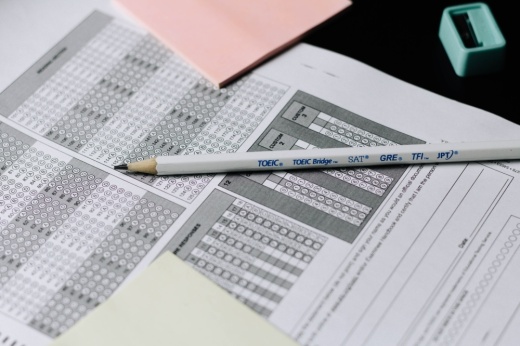The district saw five areas in which students performed below state averages, including math in grades fourth, fifth and seventh grades; fifth-grade science; and eighth-grade reading, according to data provided by the Texas Education Agency.
HISD Chief Communication Officer Jamie Mount noted the seventh-grade math scores were lower this year because many of the students took exams covering eighth-grade material.
“Many Humble ISD seventh-graders took the eighth-grade math STAAR because their seventh-grade class covers the eighth-grade material, so fewer strong math students are reflected in the seventh-grade math scores,” Mount said in a statement. “This is the first year our seventh-graders covering eighth-grade material have taken the eighth-grade STAAR instead of the seventh-grade STAAR.”
Students in the third to fifth grades demonstrated academic growth over last year in most cases. Average passage rates were higher than or the same as they were in 2021 in all subjects except fifth-grade science, seventh-grade math and eighth-grade social studies, TEA data shows.
“I am incredibly proud of the work of all of our teachers,” HISD Superintendent Elizabeth Fagen said in a statement. “These have been very challenging years, and despite the COVID loss everyone experienced, the results speak for themselves across our district.”
Fagen pointed to several initiatives the district has implemented that have attributed to student success, including a literacy assessment program and double-staffed classrooms at elementary schools.
“In an Humble ISD double-staffed classroom with some of our most impacted learners, all of the students in the classroom are learning to be biliterate in English and Spanish languages, and nearly 90% of these students passed STAAR this year,” Fagen said. “In another example, in an innovative double-staffed classroom to support 20 students, the students grew by an average of four reading levels this past year.”
Fagen noted the student-to-teacher ratio in these double-staffed classrooms is about 1-10, which she said eliminates the need for substitute teachers, reduces the isolation that teachers of at-risk students can sometimes feel and creates a team environment focused solely on the needs of at-risk students.
“It appears these are really starting to produce the results we had hoped for,” Fagen said. “Now that we have results that clearly show the positive impact for so many using this model, we are in the process of replicating it in math.” In a July 1 news release from the TEA, officials acknowledged scores improved across the state from 2021-22, most notably in reading. Texas Education Commissioner Mike Morath said the results point to a brighter future, but students are still performing below pre-COVID-19 levels in mathematics.
“The investments that the state is making in reading academies and accelerated instruction are clearly paying dividends for our students, and the results are a testament to the hard work of teachers across our state,” Morath said. “While we still have much work to do to recover from COVID[-19]-related learning loss in mathematics, the improvements our students have made in reading are clear."
State legislation passed in 2021 targeted the learning gaps formed during the pandemic, and additional legislation is expected to be implemented ahead of STAAR in 2023.
One such change will be the implementation of House Bill 3906, requiring a redesign of STAAR to better align with classroom instruction. The test will also move to total online administration next year. Students in third to eighth grades will take writing assessments as part of the reading test in spring 2023. According to the TEA, the changes strive to improve student engagement and reduce "teaching to the test."
Click here for more STAAR and end-of-course exam results.





